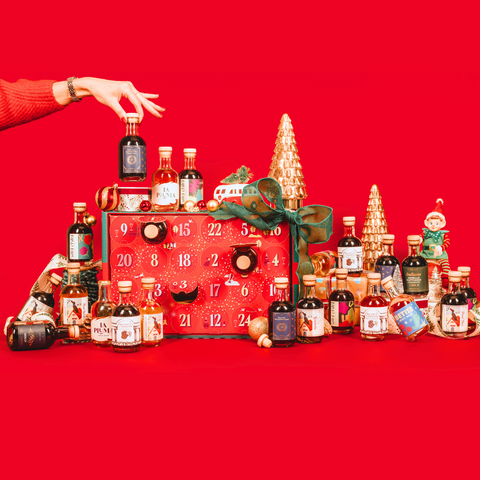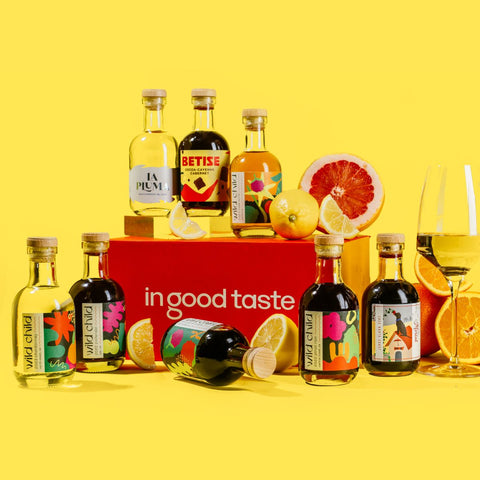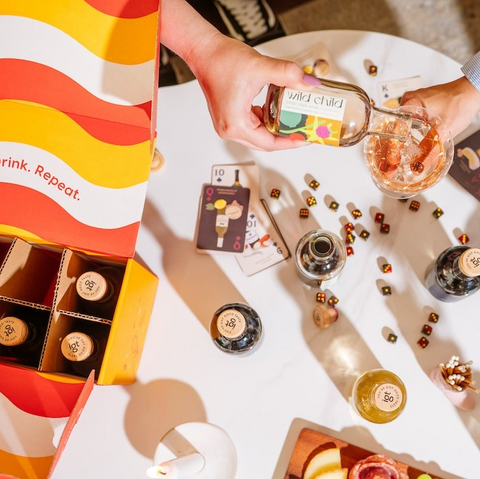Folks of legal drinking age, it is time to discuss one of the most magical things on this Earth. No, we aren’t talking about a breathtaking sunset, the Grand Canyon, the birth of a child, or the magnificent Aurora Borealis. Our topic is even more fascinating. Today, we will talk about the winemaking process — from grape to glass and every step in between.
Winemaking (also called vinification by those in the biz) is a time-honored tradition that dates back thousands of years. While much of the process has been modernized by larger wine producers, it may surprise you to learn that many estates still prefer to do certain steps the old-fashioned way. So without further ado, let’s look at what it takes to make one of the world’s most beloved beverages.
Harvesting and Picking
Without grapes, there can be no wine. So naturally, harvesting grapes is the first step in the winemaking process.
Harvesting can be done either mechanically or by hand, and both methods have pros and cons. Mechanical harvesting is much faster and more efficient, but machines often pick extraneous materials such as leaves and twigs, all of which need to be removed before pressing. This method is more popular in regions such as Australia and New Zealand, where there is not enough labor to justify the economics of hand-picking grapes.

Generally, harvesting by hand is the preferred method. The human element increases the likelihood that only the best grapes get selected, and there is less of a chance that unwanted materials will find their way into the harvest. Experienced harvesters are knowledgeable about grapes and know what to look for and which bunches to avoid.
The timing of harvesting depends on various factors, including the pH of the grapes, their sugar content, ripeness, flavor, and tannin development. Some winemakers prefer specific characteristics, and they pick their grapes at specific intervals to ensure they achieve the right flavor profiles in their wines.
Crushing and Pressing
After the grapes are harvested, they are either crushed or pressed. This is the point in the winemaking process where red and white wines differ significantly, so let’s talk about what happens with each.
Red Wine & Rosé
Grapes that are destined to become red wine are crushed, squeezed just enough to break the skin, and release some of the juice prior to fermentation. Small-scale and traditional wineries complete this process with a small crusher or, in a far more traditional method, trampling barefoot on the grapes in a wooden vat. Larger wineries use mechanical crushers to accomplish the same task on a much larger scale.
After crushing, the grapes are pressed to extract the juice from the grape, but this step happens after the fermentation stage for red wines. Since the grape skins are present during the fermentation, this gives red wine its coloring. Rosé wine is made similarly, but the grape skins are removed earlier in the process, which results in a lighter body and a subtle pink color.
White Wine
White and green grapes used for making white wine are pressed immediately after harvest, and the skins are removed before fermentation. This step ensures that the wine has minimal contact with grape skins, which can make the end product fuller-bodied and more tannic, qualities that are celebrated in red wine but less popular for whites.

Fermentation
After all of that crushing and pressing, the grapes then go through the fermentation process — the step where the real magic happens.
During fermentation, native or cultured yeast is added to the extracted grape juice. Yeast eats the naturally occurring sugars in the grapes and produces two byproducts, alcohol and carbon dioxide. Yes, friends, this is the crucial step where wine becomes an alcoholic beverage. Before fermentation, white wine must be racked, which is a step where the juice is filtered out of a settling tank to remove any sediment.

During pre-fermentation, some red wine grapes go through a process called cold-soaking. During the cold-soaking step, crushed grapes are soaked for five days in water that is about 50 degrees Fahrenheit. Some winemakers swear by this method for their reds, claiming that it extracts more color and flavor from the grape skins.
Sparkling wines, Champagne, Lambrusco, Prosecco, and Cava go through an extra step in the fermentation process that is aptly named secondary fermentation. This process takes fermented wine and ferments it a second time in a bottle or a large vat. This extra step produces the bubbles that give these wines their distinctive effervescence.
Aging
Once the wine gets its kick from fermentation, it’s time to let it age. There are many techniques for aging wine, but no matter how it’s done, aging is an essential step where wines become differentiated from one another.
The type of container that the wine is aged in plays an important role in determining the wine’s body and tasting notes. Wine can be aged in stainless steel vats, oak barrels, cement cisterns, or clay vessels. Each of these container choices provides a different flavor profile.

For instance, wines aged in steel are in a nonoxidative environment, so the wine has no interaction with oxygen. This is a good aging choice for fruit-driven wines, as this enhances that flavor. Stainless steel is also typically used for white wines, and less often for red wines.
On the other hand, oak barrels provide an oxidative environment, meaning that the wine is exposed to trace levels of oxygen as it ages. This allows the wine to develop different textures and mouthfeels. Oaked wines tend to take on different flavor notes, including vanilla, spice, and smoke. Most reds age in oak barrels, as do select whites like full-bodied Chardonnays.
Clarification/Filtration
After the wine ages, clarification and filtration remove the cloudiness and sediment that set in during the aging process. These critical steps can be done with a variety of agents that help to coagulate the solids in the wine so that they can be removed more easily. Popular clarification additives include milk, egg white, or clay.

Because this step is not necessary for the flavor of the wine and sediment removal is primarily done for aesthetic appeal, some winemakers choose to skip this step altogether — especially those who practice biodynamic, organic, and natural winemaking processes.
Bottling
After harvesting, crushing, pressing, fermenting, aging, and clarifying the wine, bottling is the final step for preparing this beautiful, delicious creation. Once the bottles are filled with the finished wine, they are sealed (with either a cork or a screw top), labeled, and packaged. For many red wines, aging continues in the bottle. Others, like light-bodied whites and sparkling wines, are better enjoyed soon after bottling. Either way, the freshly packaged bottle of wine is a beautiful sight to behold — and a delicious experience waiting to happen!

And there you have it! The mystery behind your favorite drink has been revealed. The next time you pop the cork on a bottle of wine, take a moment to appreciate its journey to get there. Years of trial and error, labor, knowledge, and expertise went into that one little bottle just for you to enjoy, which makes it all the more special. Cheers!













